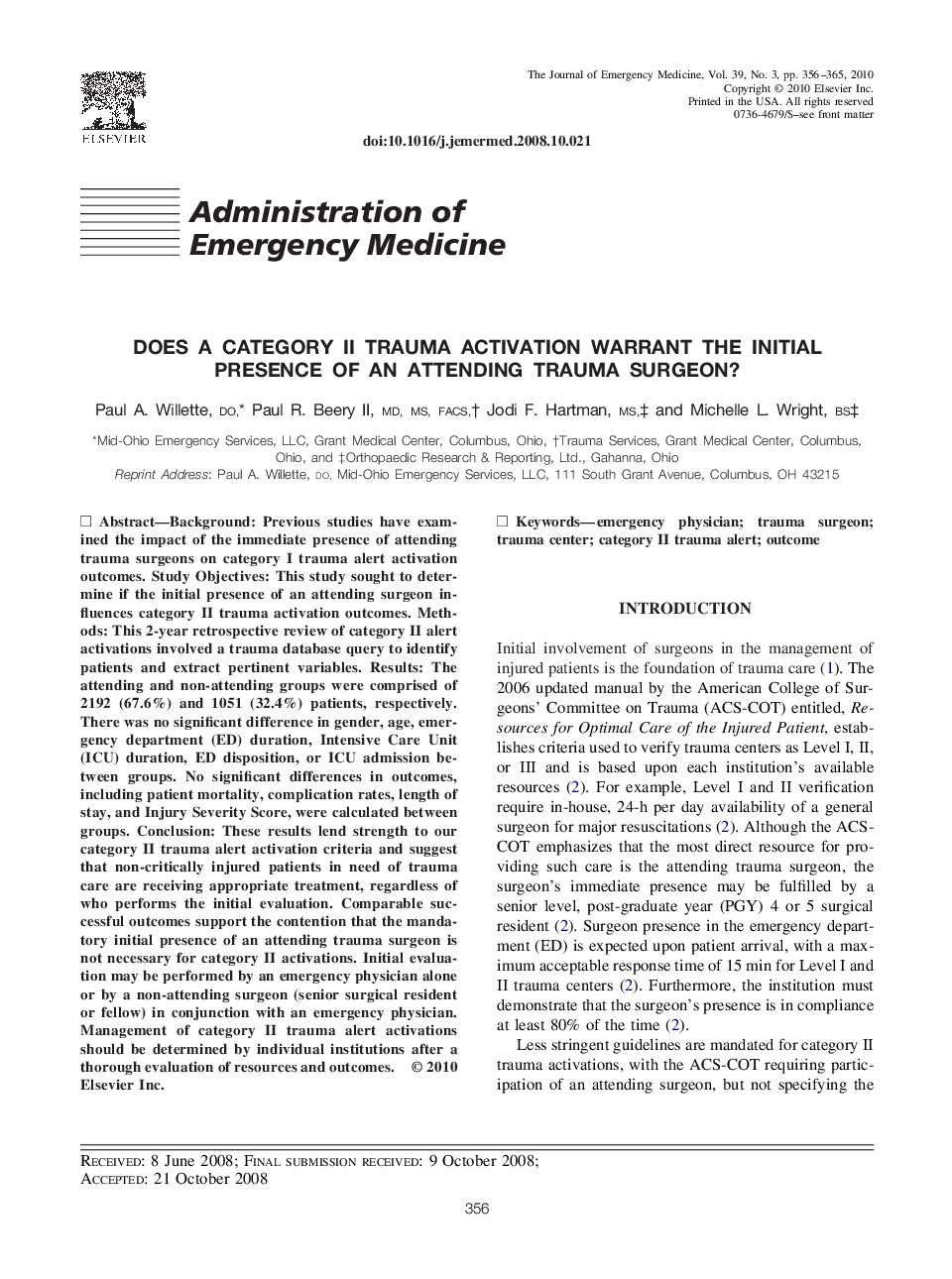| Article ID | Journal | Published Year | Pages | File Type |
|---|---|---|---|---|
| 3248412 | The Journal of Emergency Medicine | 2010 | 10 Pages |
Background: Previous studies have examined the impact of the immediate presence of attending trauma surgeons on category I trauma alert activation outcomes. Study Objectives: This study sought to determine if the initial presence of an attending surgeon influences category II trauma activation outcomes. Methods: This 2-year retrospective review of category II alert activations involved a trauma database query to identify patients and extract pertinent variables. Results: The attending and non-attending groups were comprised of 2192 (67.6%) and 1051 (32.4%) patients, respectively. There was no significant difference in gender, age, emergency department (ED) duration, Intensive Care Unit (ICU) duration, ED disposition, or ICU admission between groups. No significant differences in outcomes, including patient mortality, complication rates, length of stay, and Injury Severity Score, were calculated between groups. Conclusion: These results lend strength to our category II trauma alert activation criteria and suggest that non-critically injured patients in need of trauma care are receiving appropriate treatment, regardless of who performs the initial evaluation. Comparable successful outcomes support the contention that the mandatory initial presence of an attending trauma surgeon is not necessary for category II activations. Initial evaluation may be performed by an emergency physician alone or by a non-attending surgeon (senior surgical resident or fellow) in conjunction with an emergency physician. Management of category II trauma alert activations should be determined by individual institutions after a thorough evaluation of resources and outcomes.
